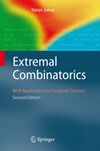组合数学 (Fall 2015): Difference between revisions
Jump to navigation
Jump to search
imported>Etone |
imported>Etone |
||
| (42 intermediate revisions by the same user not shown) | |||
| Line 60: | Line 60: | ||
= Announcement = | = Announcement = | ||
*(2015/9/6) <font color=red size=4> | *(2015/9/6) 第一次课程slides已上传。 | ||
*(2015/9/17) 第三次课程生成函数的slides已上传,其中包括了下次课要讲的一些内容。 | |||
*(2015/9/22) 第一次作业已发布,10月13日上课收。 | |||
*(2015/9/22) 9月29日停课一次。 | |||
*(2015/9/22) 生成函数部分的slide已更新,包含了课上讲的新内容。 | |||
*(2015/9/22) 第一次作业增加了最后一题。 | |||
*(2015/10/29) 在蔡沛程同学的神勇帮助下,我们的课程网站服务器终于重新上线了! | |||
*(2015/11/2) 最近几次课程的slides已上传。 | |||
*(2015/11/24) 第三次作业已上传,12月8日课上交。 | |||
*(2015/12/11) 本周六(12月12日)下午2点补课,地点在仙I-206。 | |||
*(2015/12/15) 最后一次作业已发布,12月29日交。 | |||
*(2015/12/22) <font color=red size=4>全部讲义和slides已发布。</font> | |||
*(2015/12/22) <font color=red size=5>12月29日上课考试并收最后一次作业,祝大家取得好成绩!</font> | |||
= Course info = | = Course info = | ||
| Line 93: | Line 105: | ||
= Assignments = | = Assignments = | ||
*[[组合数学 (Fall 2015)/Problem Set 1|Problem Set 1]] due on Oct. 13 in class. | |||
*[[组合数学 (Fall 2015)/Problem Set 2|Problem Set 2]] | |||
*[[组合数学 (Fall 2015)/Problem Set 3|Problem Set 3]] due on Dec. 8 in class. | |||
*[[组合数学 (Fall 2015)/Problem Set 4|Problem Set 4]] due on Dec. 29. | |||
= Lecture Notes = | = Lecture Notes = | ||
# Introduction 课程简介( [ | # Introduction | 课程简介( [http://tcs.nju.edu.cn/slides/comb2015/intro.pdf slides]) | ||
# [[组合数学 (Spring 2015)/Basic enumeration|Basic enumeration 基本计数]]( [ | # [[组合数学 (Spring 2015)/Basic enumeration|Basic enumeration | 基本计数]]( [http://tcs.nju.edu.cn/slides/comb2015/BasicEnumeration.pdf slides]) | ||
# [[组合数学 (Spring 2015)/Generating functions|Generating functions 生成函数]] | # [[组合数学 (Spring 2015)/Generating functions|Generating functions | 生成函数]]( [http://tcs.nju.edu.cn/slides/comb2015/GeneratingFunction.pdf slides]) | ||
# [[组合数学 (Spring 2015)/Sieve methods|Sieve methods | 筛法]]( [http://tcs.nju.edu.cn/slides/comb2015/PIE.pdf slides]) | |||
# [[组合数学 (Spring 2015)/Cayley's formula|Cayley's formula | Cayley公式]]( [http://tcs.nju.edu.cn/slides/comb2015/CayleyFormula.pdf slides]) | |||
# [[组合数学 (Spring 2015)/Pólya's theory of counting|Pólya's theory of counting | Pólya计数法]]( [http://tcs.nju.edu.cn/slides/comb2015/PolyaTheory.pdf slides]) | |||
# [[组合数学 (Spring 2015)/Existence problems|Existence problems | 存在性问题]]( [http://tcs.nju.edu.cn/slides/comb2015/Existence.pdf slides]) | |||
# [[组合数学 (Spring 2015)/The probabilistic method|The probabilistic method | 概率法]]( [http://tcs.nju.edu.cn/slides/comb2015/ProbMethod.pdf slides]) | |||
# [[组合数学 (Spring 2015)/Extremal graph theory|Extremal graph theory | 极值图论]]( [http://tcs.nju.edu.cn/slides/comb2015/ExtremalGraphs.pdf slides]) | |||
# [[组合数学 (Spring 2015)/Extremal set theory|Extremal set theory | 极值集合论]]( [http://tcs.nju.edu.cn/slides/comb2015/ExtremalSets.pdf slides]) | |||
# [[组合数学 (Spring 2015)/Ramsey theory|Ramsey theory | Ramsey理论]]( [http://tcs.nju.edu.cn/slides/comb2015/Ramsey.pdf slides]) | |||
# [[组合数学 (Spring 2015)/Matching theory| Matching theory | 匹配论]]( [http://tcs.nju.edu.cn/slides/comb2015/Matchings.pdf slides]) | |||
= Concepts = | = Concepts = | ||
| Line 108: | Line 132: | ||
* [http://en.wikipedia.org/wiki/Stirling_numbers_of_the_second_kind Stirling number of the second kind] | * [http://en.wikipedia.org/wiki/Stirling_numbers_of_the_second_kind Stirling number of the second kind] | ||
* [http://en.wikipedia.org/wiki/Partition_(number_theory) Partition of a number] | * [http://en.wikipedia.org/wiki/Partition_(number_theory) Partition of a number] | ||
* [http://en.wikipedia.org/wiki/Fibonacci_number Fibonacci number] | |||
* [http://en.wikipedia.org/wiki/Catalan_number Catalan number] | |||
* [http://en.wikipedia.org/wiki/Generating_function Generating function] and [http://en.wikipedia.org/wiki/Formal_power_series formal power series] | |||
* [http://en.wikipedia.org/wiki/Binomial_series Newton's formula] | |||
* [http://en.wikipedia.org/wiki/Inclusion-exclusion_principle The principle of inclusion-exclusion] (and more generally the [http://en.wikipedia.org/wiki/Sieve_theory sieve method]) | |||
* [http://en.wikipedia.org/wiki/M%C3%B6bius_inversion_formula Möbius inversion formula] | |||
* [http://en.wikipedia.org/wiki/Derangement Derangement], and [http://en.wikipedia.org/wiki/M%C3%A9nage_problem Problème des ménages] | |||
* [http://en.wikipedia.org/wiki/Ryser%27s_formula#Ryser_formula Ryser's formula] | |||
* [http://en.wikipedia.org/wiki/Euler_totient Euler totient function] | |||
* [http://en.wikipedia.org/wiki/Cayley_formula Cayley's formula] | |||
** [http://en.wikipedia.org/wiki/Prüfer_sequence Prüfer code for trees] | |||
** [http://en.wikipedia.org/wiki/Kirchhoff%27s_matrix_tree_theorem Kirchhoff's matrix-tree theorem] | |||
* [http://en.wikipedia.org/wiki/Double_counting_(proof_technique) Double counting] and the [http://en.wikipedia.org/wiki/Handshaking_lemma handshaking lemma] | |||
* [http://en.wikipedia.org/wiki/Sperner's_lemma Sperner's lemma] and [http://en.wikipedia.org/wiki/Brouwer_fixed_point_theorem Brouwer fixed point theorem] | |||
* [http://en.wikipedia.org/wiki/Pigeonhole_principle Pigeonhole principle] | |||
:* [http://en.wikipedia.org/wiki/Erd%C5%91s%E2%80%93Szekeres_theorem Erdős–Szekeres theorem] | |||
:* [http://en.wikipedia.org/wiki/Dirichlet's_approximation_theorem Dirichlet's approximation theorem] | |||
* [http://en.wikipedia.org/wiki/Probabilistic_method The Probabilistic Method] | |||
* [http://en.wikipedia.org/wiki/Lov%C3%A1sz_local_lemma Lovász local lemma] | |||
* [http://en.wikipedia.org/wiki/Erd%C5%91s%E2%80%93R%C3%A9nyi_model Erdős–Rényi model for random graphs] | |||
* [http://en.wikipedia.org/wiki/Extremal_graph_theory Extremal graph theory] | |||
* [http://en.wikipedia.org/wiki/Turan_theorem Turán's theorem], [http://en.wikipedia.org/wiki/Tur%C3%A1n_graph Turán graph] | |||
* Two analytic inequalities: | |||
:*[http://en.wikipedia.org/wiki/Cauchy%E2%80%93Schwarz_inequality Cauchy–Schwarz inequality] | |||
:* the [http://en.wikipedia.org/wiki/Inequality_of_arithmetic_and_geometric_means inequality of arithmetic and geometric means] | |||
* [http://en.wikipedia.org/wiki/Erd%C5%91s%E2%80%93Stone_theorem Erdős–Stone theorem] (fundamental theorem of extremal graph theory) | |||
* [http://en.wikipedia.org/wiki/Sperner_family Sperner system] | |||
* [http://en.wikipedia.org/wiki/Erd%C5%91s%E2%80%93Ko%E2%80%93Rado_theorem Erdős–Ko–Rado theorem] | |||
* [http://en.wikipedia.org/wiki/Ramsey_theory Ramsey theory] | |||
:*[http://en.wikipedia.org/wiki/Ramsey's_theorem Ramsey's theorem] | |||
:*[http://en.wikipedia.org/wiki/Happy_Ending_problem Happy Ending problem] | |||
* [http://en.wikipedia.org/wiki/Hall's_theorem Hall's theorem ] (the marriage theorem) | |||
* [http://en.wikipedia.org/wiki/K%C3%B6nig's_theorem_(graph_theory) König-Egerváry theorem] | |||
* [http://en.wikipedia.org/wiki/Dilworth's_theorem Dilworth's theorem] | |||
* The [http://en.wikipedia.org/wiki/Max-flow_min-cut_theorem Max-Flow Min-Cut Theorem] | |||
:* [http://en.wikipedia.org/wiki/Maximum_flow_problem Maximum flow] | |||
Latest revision as of 12:46, 15 September 2017
This is the page for the class Combinatorics for the Fall 2015 semester. Students who take this class should check this page periodically for content updates and new announcements.
Announcement
- (2015/9/6) 第一次课程slides已上传。
- (2015/9/17) 第三次课程生成函数的slides已上传,其中包括了下次课要讲的一些内容。
- (2015/9/22) 第一次作业已发布,10月13日上课收。
- (2015/9/22) 9月29日停课一次。
- (2015/9/22) 生成函数部分的slide已更新,包含了课上讲的新内容。
- (2015/9/22) 第一次作业增加了最后一题。
- (2015/10/29) 在蔡沛程同学的神勇帮助下,我们的课程网站服务器终于重新上线了!
- (2015/11/2) 最近几次课程的slides已上传。
- (2015/11/24) 第三次作业已上传,12月8日课上交。
- (2015/12/11) 本周六(12月12日)下午2点补课,地点在仙I-206。
- (2015/12/15) 最后一次作业已发布,12月29日交。
- (2015/12/22) 全部讲义和slides已发布。
- (2015/12/22) 12月29日上课考试并收最后一次作业,祝大家取得好成绩!
Course info
- Instructor : 尹一通
- email: yitong.yin@gmail.com, yinyt@nju.edu.cn,
- office: 804
- Class meeting: Tuesday 8am-10am, 仙 I-206.
- Office hour: Tuesday 2-4pm, 计算机系 804.
Syllabus
先修课程 Prerequisites
- 离散数学(Discrete Mathematics)
- 线性代数(Linear Algebra)
- 概率论(Probability Theory)
Course materials
成绩 Grades
- 课程成绩:本课程将会有若干次作业和一次期末考试。最终成绩将由平时作业成绩和期末考试成绩综合得出。
- 迟交:如果有特殊的理由,无法按时完成作业,请提前联系授课老师,给出正当理由。否则迟交的作业将不被接受。
学术诚信 Academic Integrity
学术诚信是所有从事学术活动的学生和学者最基本的职业道德底线,本课程将不遗余力的维护学术诚信规范,违反这一底线的行为将不会被容忍。
作业完成的原则:署你名字的工作必须由你完成。允许讨论,但作业必须独立完成,并在作业中列出所有参与讨论的人。不允许其他任何形式的合作——尤其是与已经完成作业的同学“讨论”。
本课程将对剽窃行为采取零容忍的态度。在完成作业过程中,对他人工作(出版物、互联网资料、其他人的作业等)直接的文本抄袭和对关键思想、关键元素的抄袭,按照 ACM Policy on Plagiarism的解释,都将视为剽窃。剽窃者成绩将被取消。如果发现互相抄袭行为, 抄袭和被抄袭双方的成绩都将被取消。因此请主动防止自己的作业被他人抄袭。
学术诚信影响学生个人的品行,也关乎整个教育系统的正常运转。为了一点分数而做出学术不端的行为,不仅使自己沦为一个欺骗者,也使他人的诚实努力失去意义。让我们一起努力维护一个诚信的环境。
Assignments
- Problem Set 1 due on Oct. 13 in class.
- Problem Set 2
- Problem Set 3 due on Dec. 8 in class.
- Problem Set 4 due on Dec. 29.
Lecture Notes
- Introduction | 课程简介( slides)
- Basic enumeration | 基本计数( slides)
- Generating functions | 生成函数( slides)
- Sieve methods | 筛法( slides)
- Cayley's formula | Cayley公式( slides)
- Pólya's theory of counting | Pólya计数法( slides)
- Existence problems | 存在性问题( slides)
- The probabilistic method | 概率法( slides)
- Extremal graph theory | 极值图论( slides)
- Extremal set theory | 极值集合论( slides)
- Ramsey theory | Ramsey理论( slides)
- Matching theory | 匹配论( slides)
Concepts
- Binomial coefficient
- The twelvefold way
- Composition of a number
- Combinations with repetition, [math]\displaystyle{ k }[/math]-multisets on a set
- Multinomial coefficients
- Stirling number of the second kind
- Partition of a number
- Fibonacci number
- Catalan number
- Generating function and formal power series
- Newton's formula
- The principle of inclusion-exclusion (and more generally the sieve method)
- Möbius inversion formula
- Derangement, and Problème des ménages
- Ryser's formula
- Euler totient function
- Cayley's formula
- Double counting and the handshaking lemma
- Sperner's lemma and Brouwer fixed point theorem
- Pigeonhole principle
- The Probabilistic Method
- Lovász local lemma
- Erdős–Rényi model for random graphs
- Extremal graph theory
- Turán's theorem, Turán graph
- Two analytic inequalities:
- Erdős–Stone theorem (fundamental theorem of extremal graph theory)
- Sperner system
- Erdős–Ko–Rado theorem
- Ramsey theory
- Hall's theorem (the marriage theorem)
- König-Egerváry theorem
- Dilworth's theorem
- The Max-Flow Min-Cut Theorem

